The Quiet Man from Kells
When Maurice Walsh came up with the Quiet Man as a title for one of his stories he could have been using an appropriate sobriquet for the man who was to become famous through the John Fords film of Walsh’s story. If you have ever visited a shop in Galway, watched TV on a Christmas day, or went to a “barn-cinema” anytime in the last 60 years, you are no doubt familiar with the movie. Dick’s song “Isle of Innisfree” is the principle musical theme in the iconic film but the name of Dick Farrelly is missing from the list of credits.
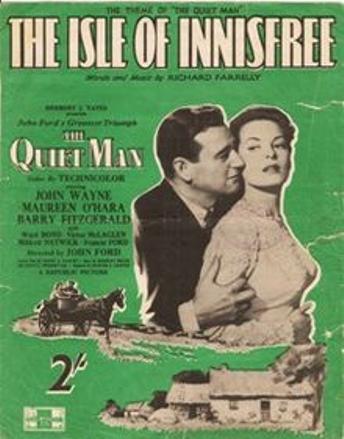 | poster |
Professor Des MacHale in his book, "Picture The Quiet Man", says –“The melody is featured at least eleven times throughout the film, including its use during the opening sequence.”. . . . "It is one of the finest and most beautiful melodies ever written, ranking in the opinion of many, right beside Danny Boy and no greater praise is possible. But its appeal is also timeless and international, expressing as it does the trauma of separation from one's birthplace and the joy of returning to the physical soil from which one is sprung... But it is the sheer unanswerable beauty of the melody that makes the greatest impact and dwells so deeply in the memory. Here is music dripping with emotion, lush texture, brimming with nostalgia, and fitting so perfectly into the action of The Quiet Man that it could have been written with the movie in mind. No wonder John Ford jumped on it and named the village of Innisfree in its honour".
In more recent times "Isle of Innisfree" is also used in the film E.T. (1982) where a scene from The Quiet Man is shown, and again the melody can be heard in the soundtracks of the films, Distant Voices, Still Lives (1988) and Breakfast on Pluto (2005).
But Dick Farrelly, the quiet unassuming man, wrote more than two hundred other songs. He was born on Thursday 17 February 1916 in Kells, County Meath. His parents were publicans and when Dick was twenty-three he left Kells, to join An Garda Siochana. He served in various Garda stations throughout his thirty-eight year career, ending up in the Carriage Office in Dublin Castle. He made frequent visits to his native Kells and one day while traveling back to Dublin by bus he got the inspiration for the "Isle of Innisfree" and by the time he reached Dublin he had composed the words and music.
Farrelly’s poignant words express the longing of an Irish emigrant for his native land. It was recorded by Bing Crosby for whom it became a huge international hit. It has since been recorded by a great many artists worldwide but above all, it endures in the hearts of many to this day as one of the great songs of Ireland. It was also featured in the RTÉ Radio Arts Programme, "Rattlebag", as one of the top 75 Irish songs of all time in a series entitled, "The Story Behind The Songs."
Dick Farrelly | 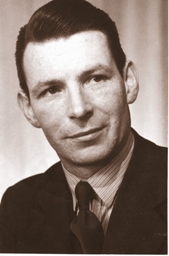 |
In 1948, Anne Shelton recorded Dick Farrelly's first success, "If You Ever Fall in Love Again", becoming a hit for her in the UK. Guy Lombardo and his Orchestra, and instrumental pop group, The Three Suns, recorded the song in the USA. "Cottage by the Lee", was popularised by Joe Lynch and "The Rose of Slievenamon" was recorded by Joseph Locke. In later years he wrote "The Gypsy Maiden" which was recorded by Diarmuid O’Leary & The Bards, "Annaghdown" recorded by Larry Cunningham reaching No 6 in the Irish charts and also by Sonny Knowles.
"Man of the Road" was recorded by The Café Orchestra featuring singer Sinead Stone. "We Dreamed our Dreams", written by Dick when he was over 70, was first recorded by The Fureys & Davy Arthur in 1988. There are also recordings by Sean Keane, Cathy Ryan, The BBC Radio Orchestra featuring Finbar Furey on an album of the same title. "We Dreamed our Dreams" was covered by Maura O'Connell/Cherish The Ladies in the US.
Dick was involved in the Castlebar International Song Contest on several occasions coming runner-up in 1968 with The Gypsy Maiden, winning the Pop section in 1972 with "That's What Love is Made Of" sung by Mary Lou and in 1976 his song "Who's Gonna be the Preacher" reached the finals and was placed 3rd overall.
He also wrote songs in Irish, two of which are "Siobhan" and "Seolta Bána".
His works have been recorded by innumerable artists some of which include: Celtic Woman, Tommy Fleming, Sean Tyrell, Bing Crosby, Sinead Stone & Gerard Farrelly, The Cafe Orchestra, Phil Coulter, Anne Shelton, Vera Lynn, Dublin Screen Orchestra - ("The Quiet Man" soundtrack album), Connie Francis, Joe Loss & His Orchestra, Eamonn Cambell, James McNally, Finbar Furey, Paddy Reilly, Frank Patterson, Norrie Paramor & His Orchestra, RTÉ Concert Orchestra, Paddy Cole, Diarmuid O’Leary, Joseph Locke, Charlie Landsborough, Val Doonican, Daniel O’Donnell, Geraldo & His Orchestra, James Galway, John McNally, Jimmy Young, Victor Young & His Singing Strings, The Irish Tenors, Glen Curtin, Dublin City Ramblers, Sean Dunphy, Jimmy Griffin, Tony Kenny and Alec Finn to name but a few.
Legacy of a Quiet Man | 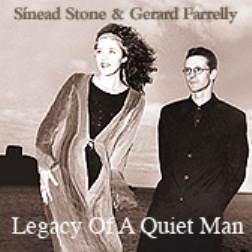 |
Dick married Anne Lowry from Headford, Co.Galway in 1955, and the couple had five children. His two sons Dick and Gerard are professional musicians. Eleven of his songs have now been recorded by his son Gerard with Sinead Stone on an album Legacy of a Quiet Man.
The multi-talented songwriter, policemam and poet from Kells died on Saturday 11 August 1990.
Details from: seoltarecords@ireland.com
Click on Mattie Lennon for bio and list of other works published by Pencil Stubs Online.
Below: Dick Farrelly at the piano.
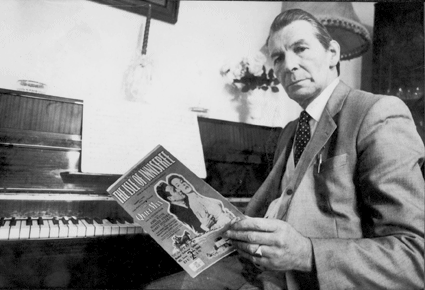





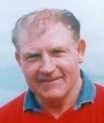
No comments:
Post a Comment